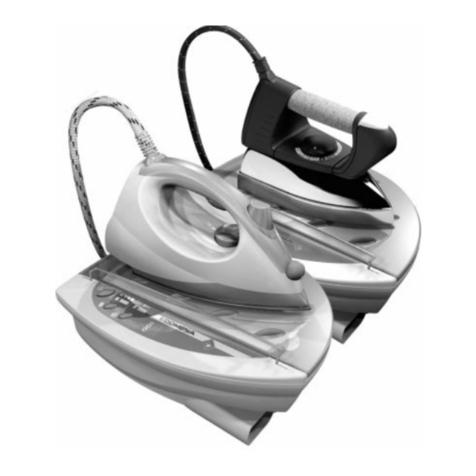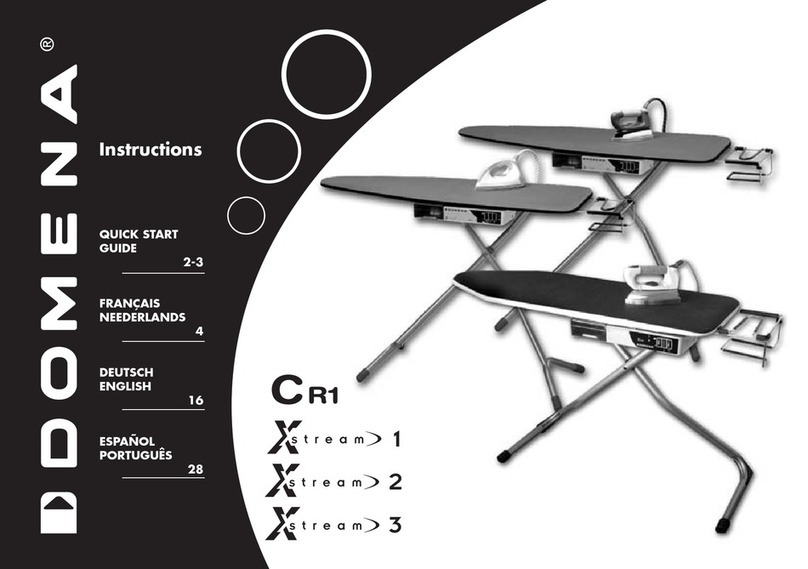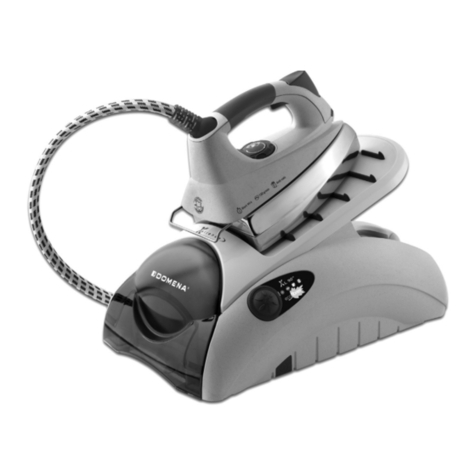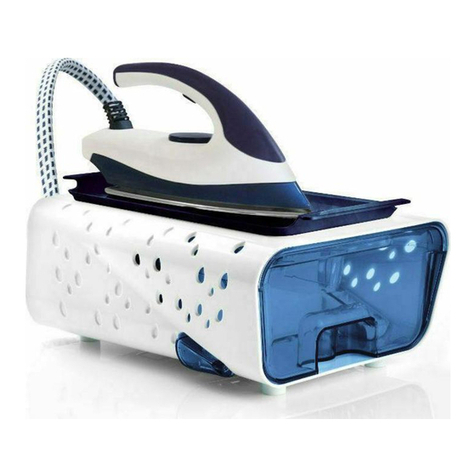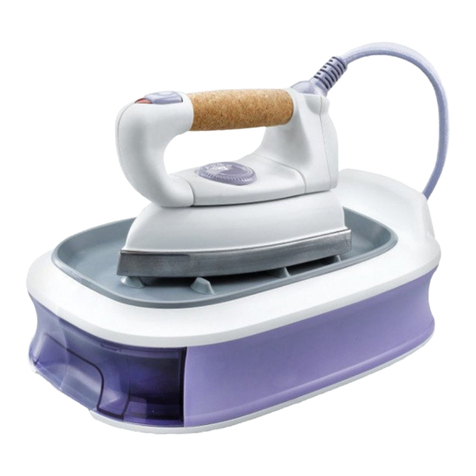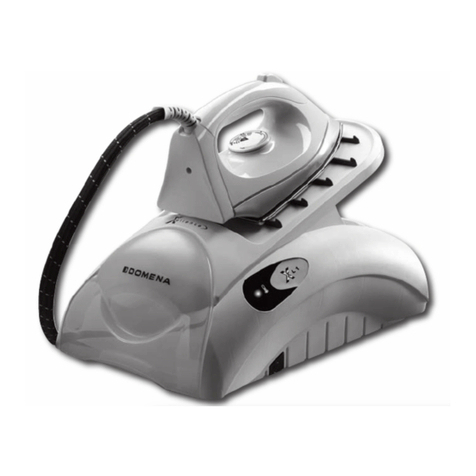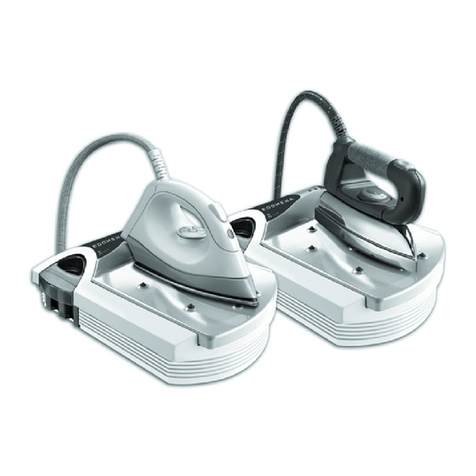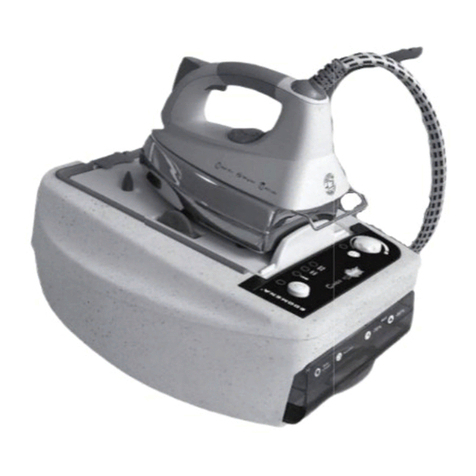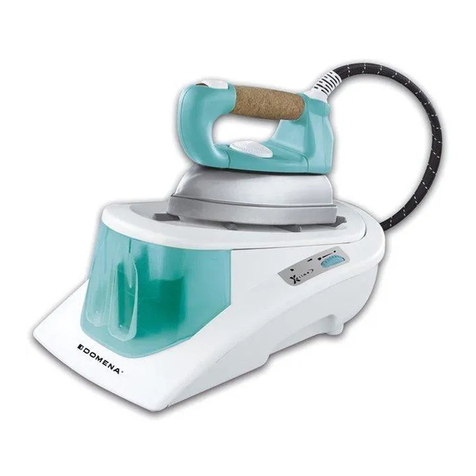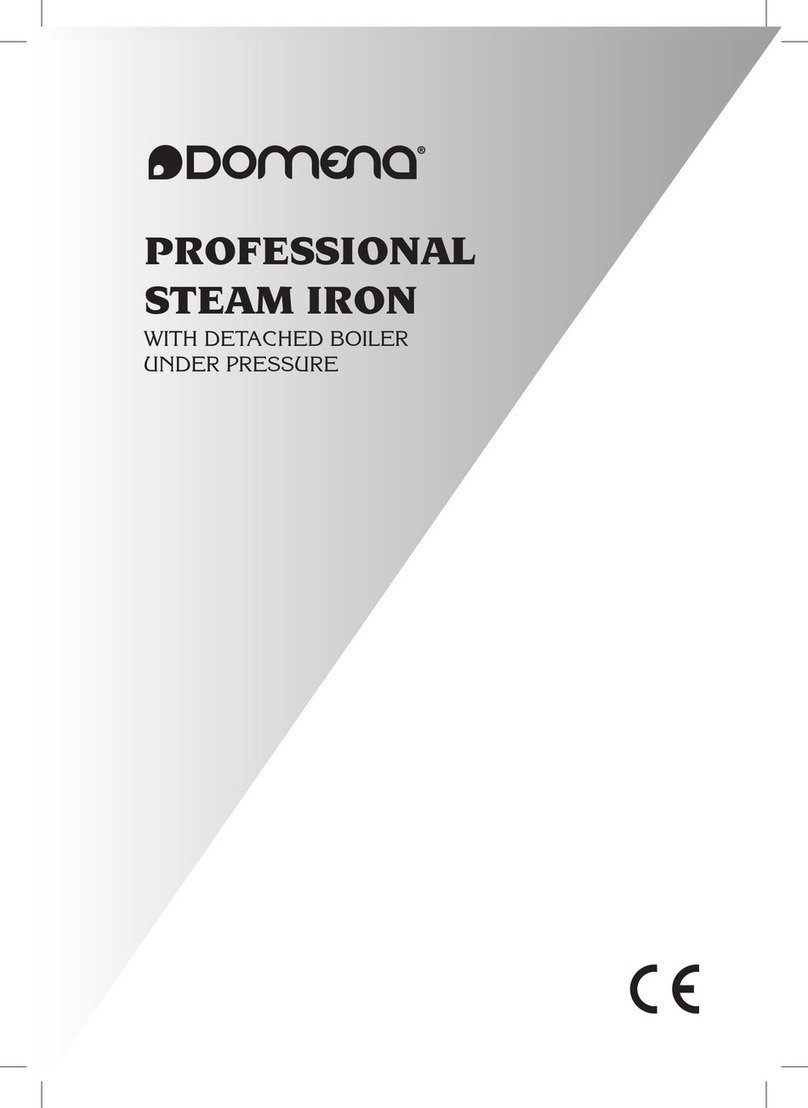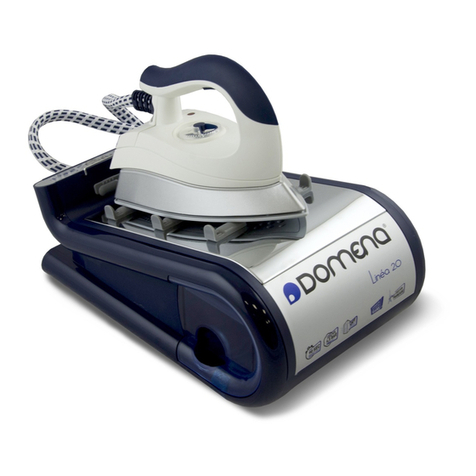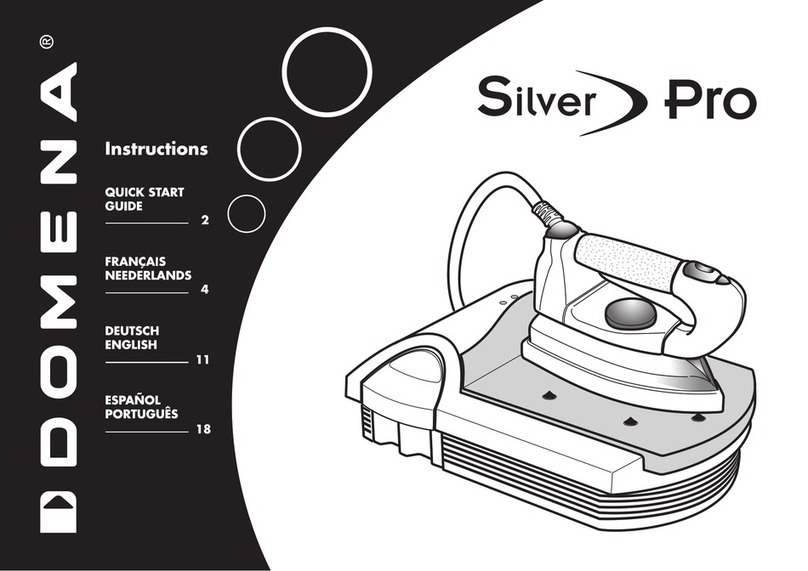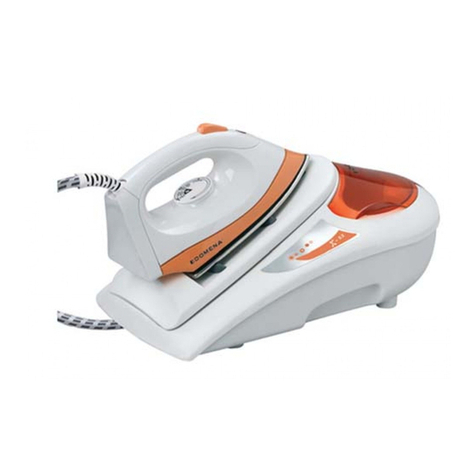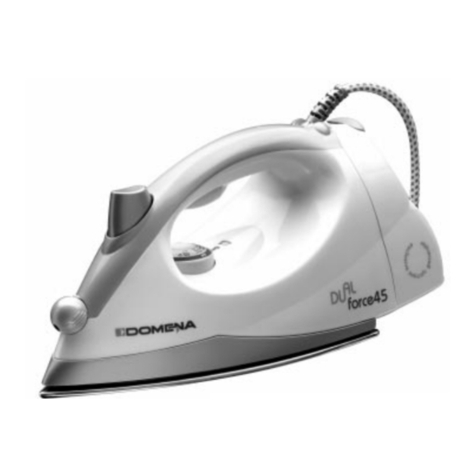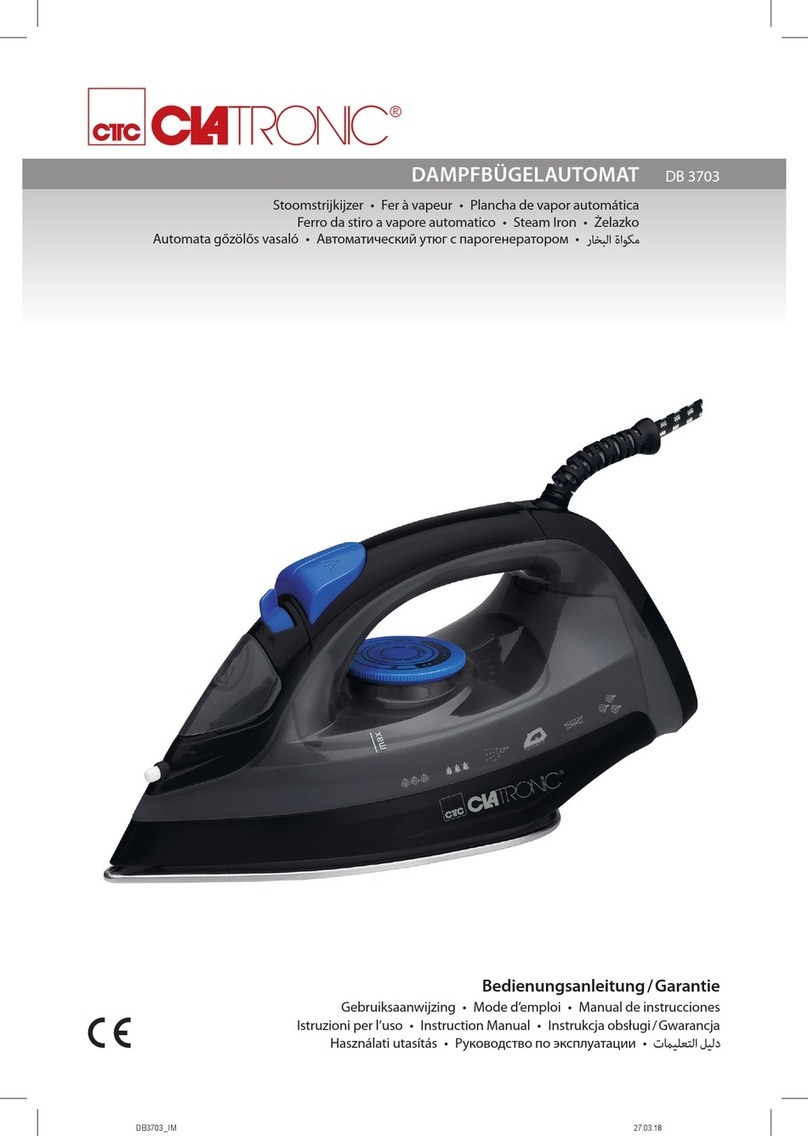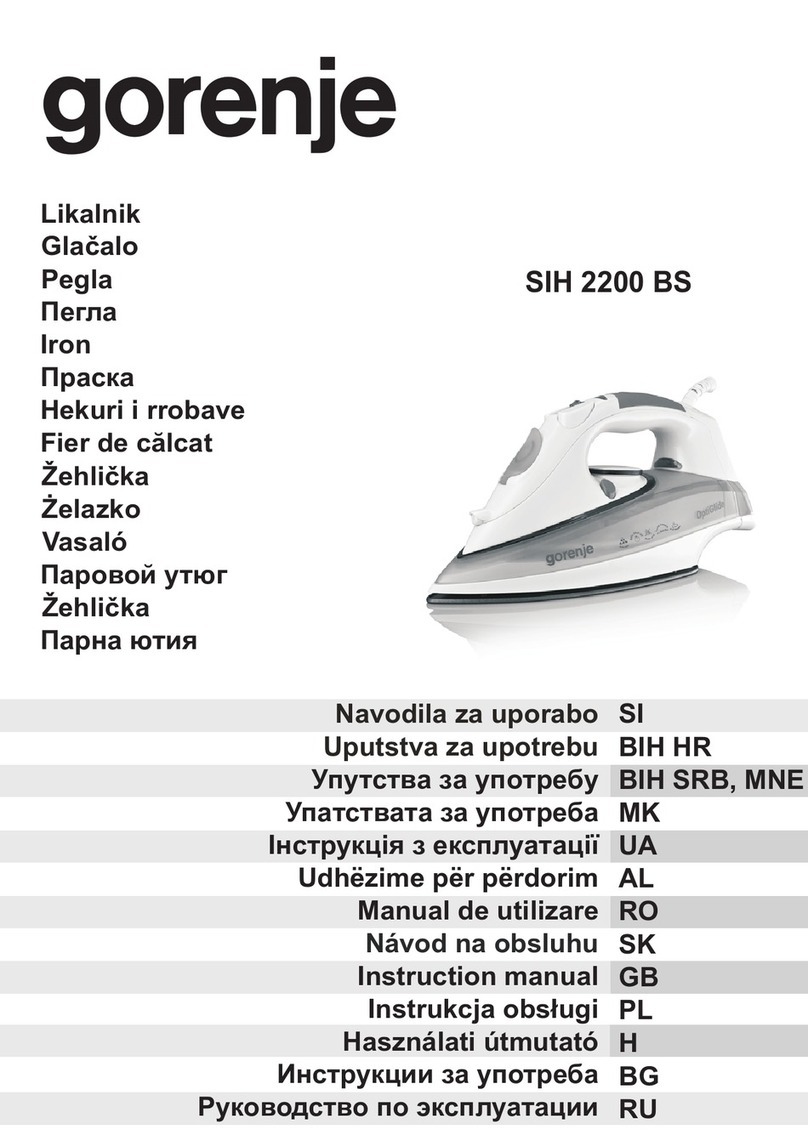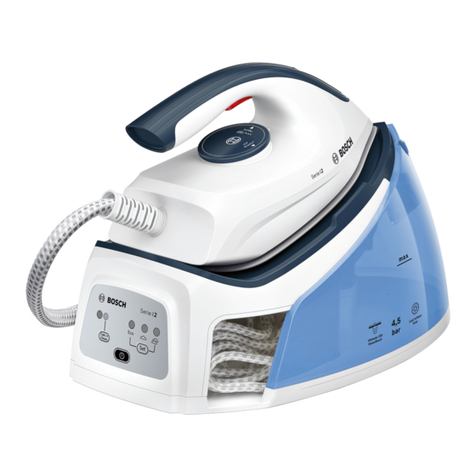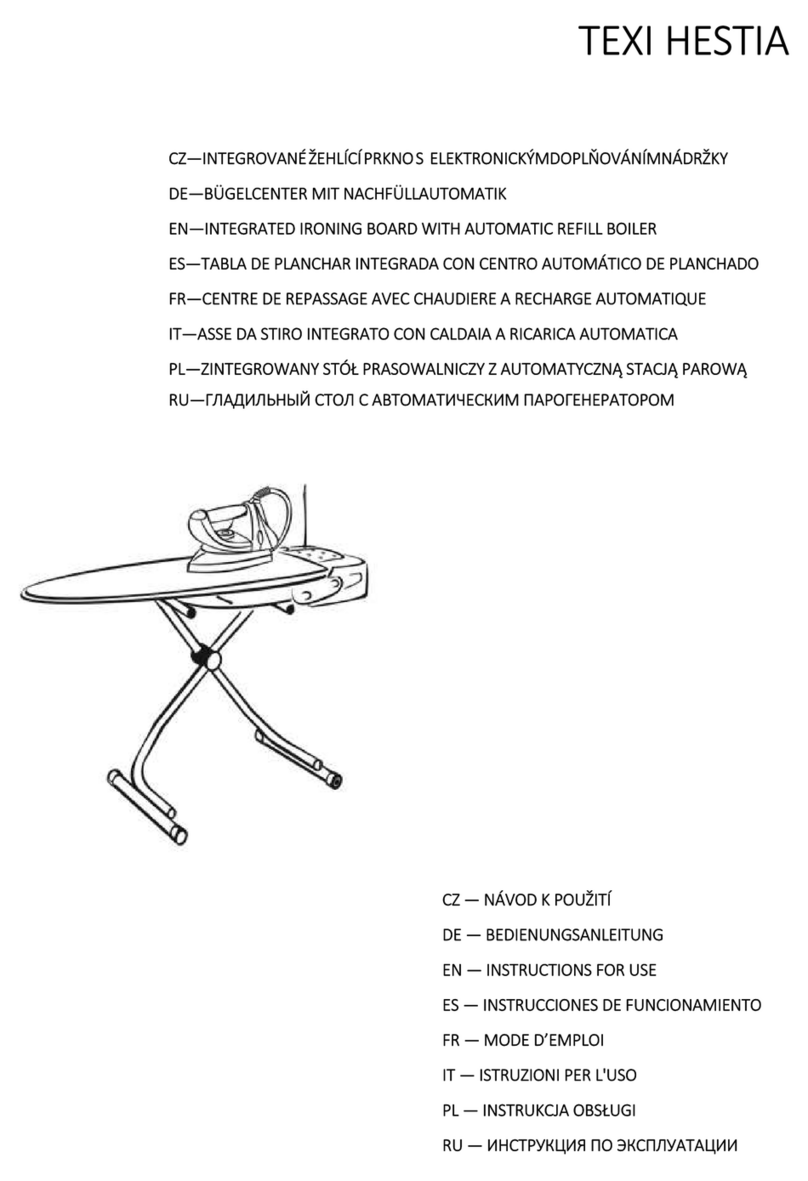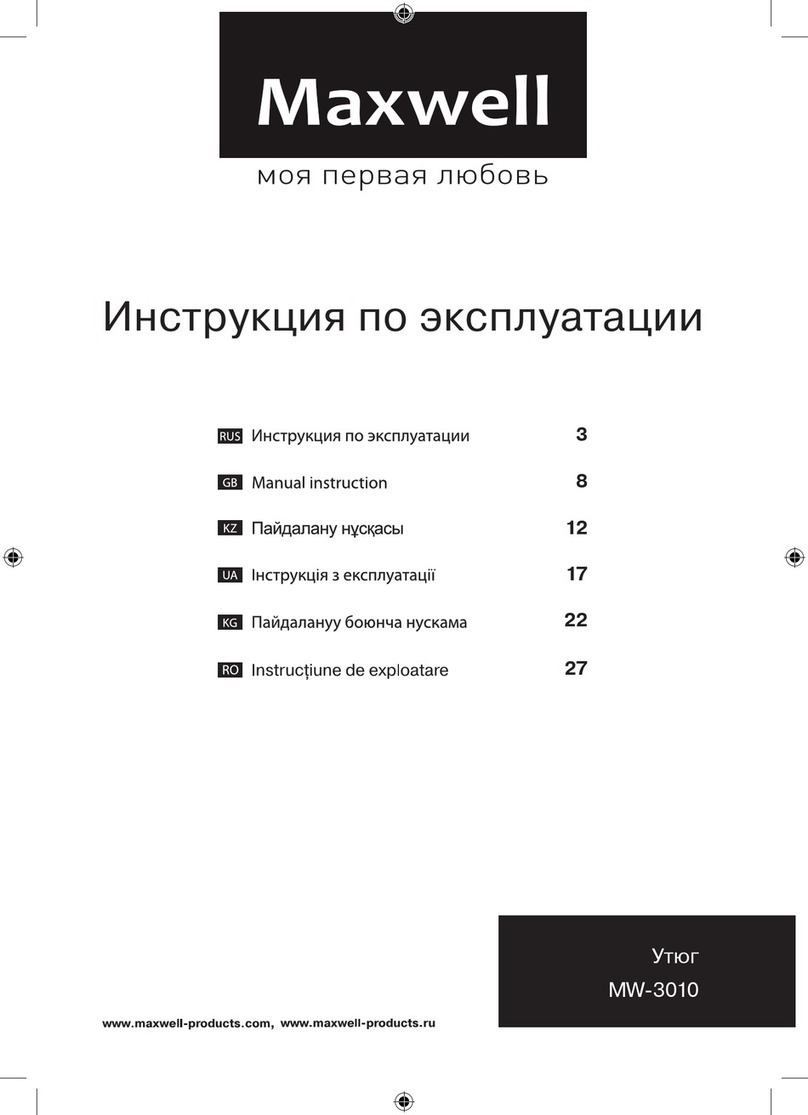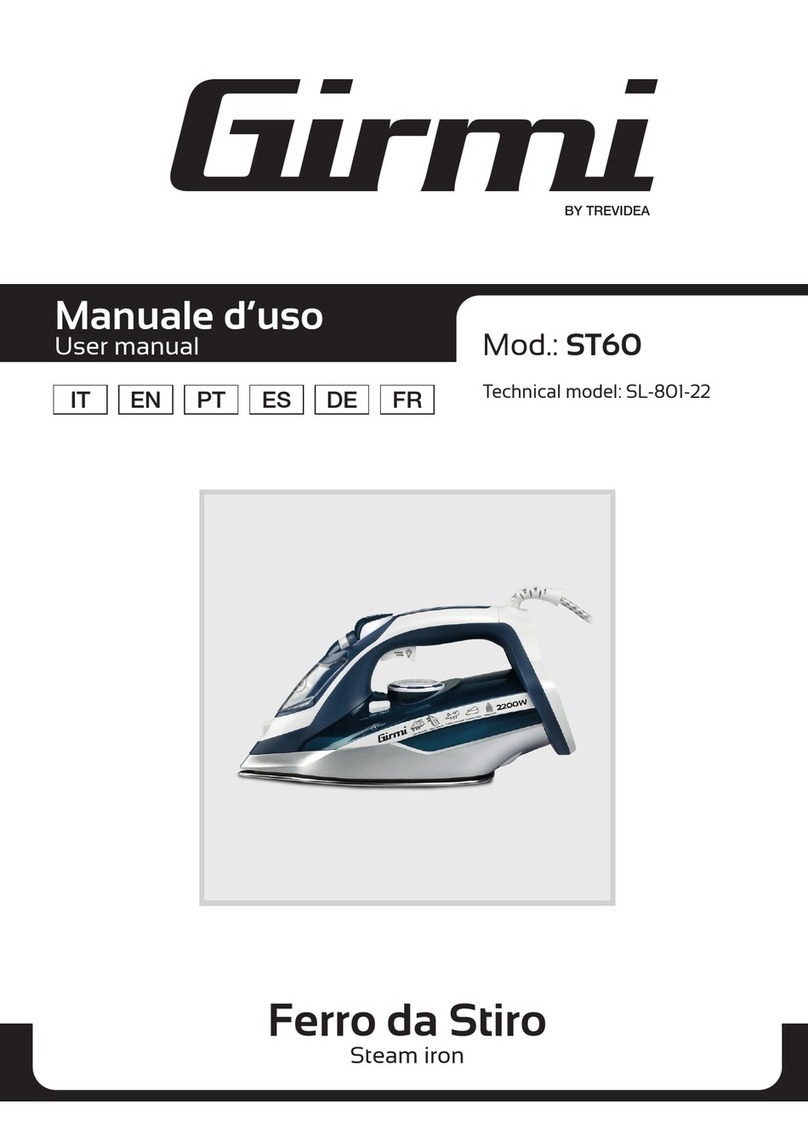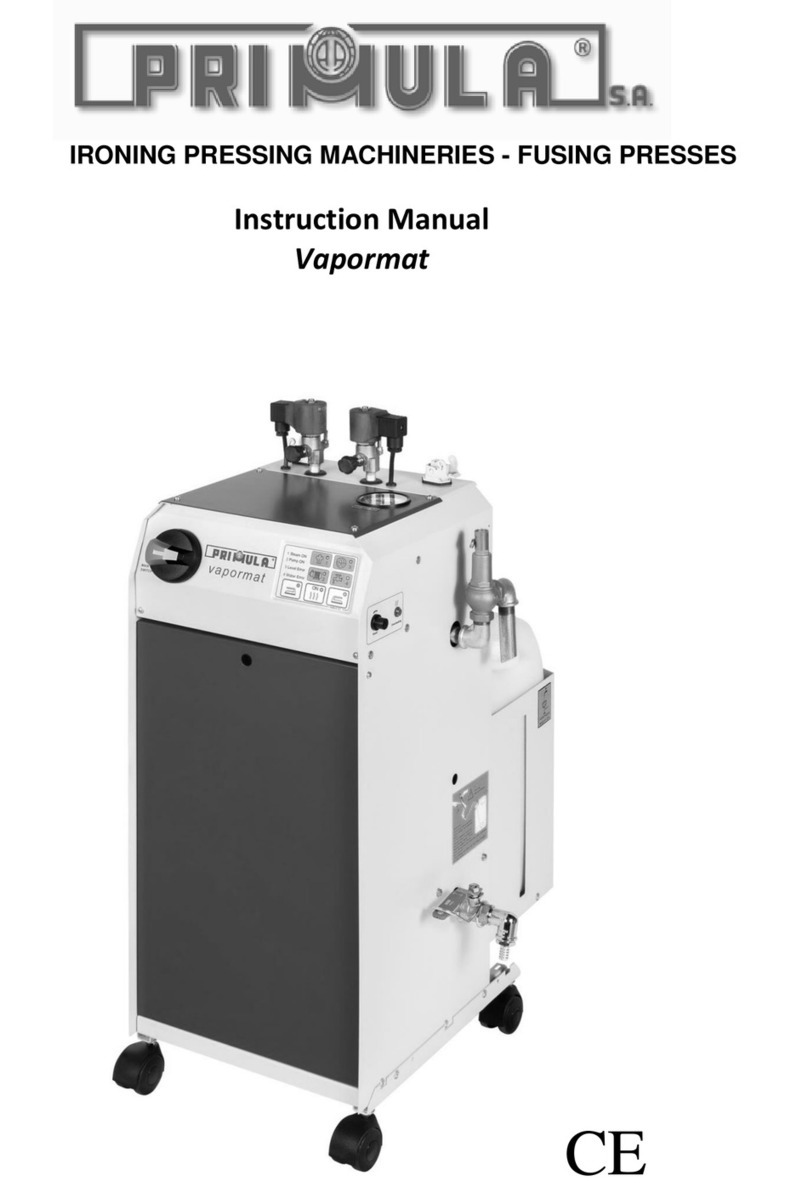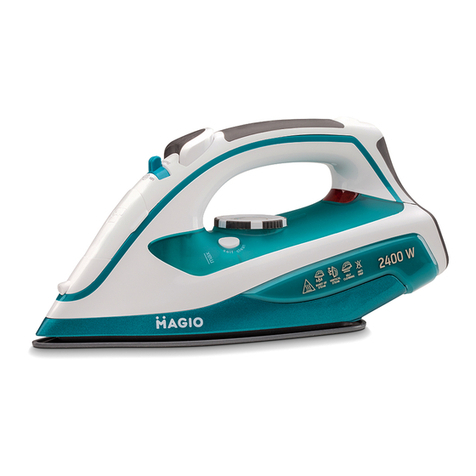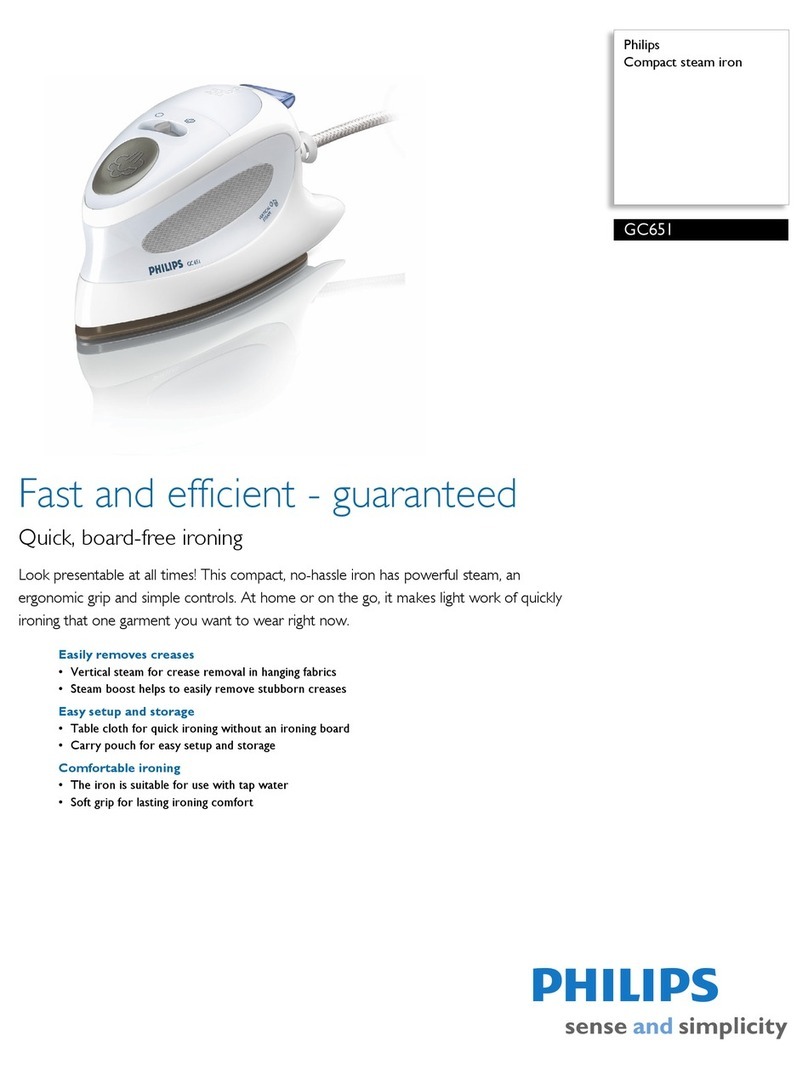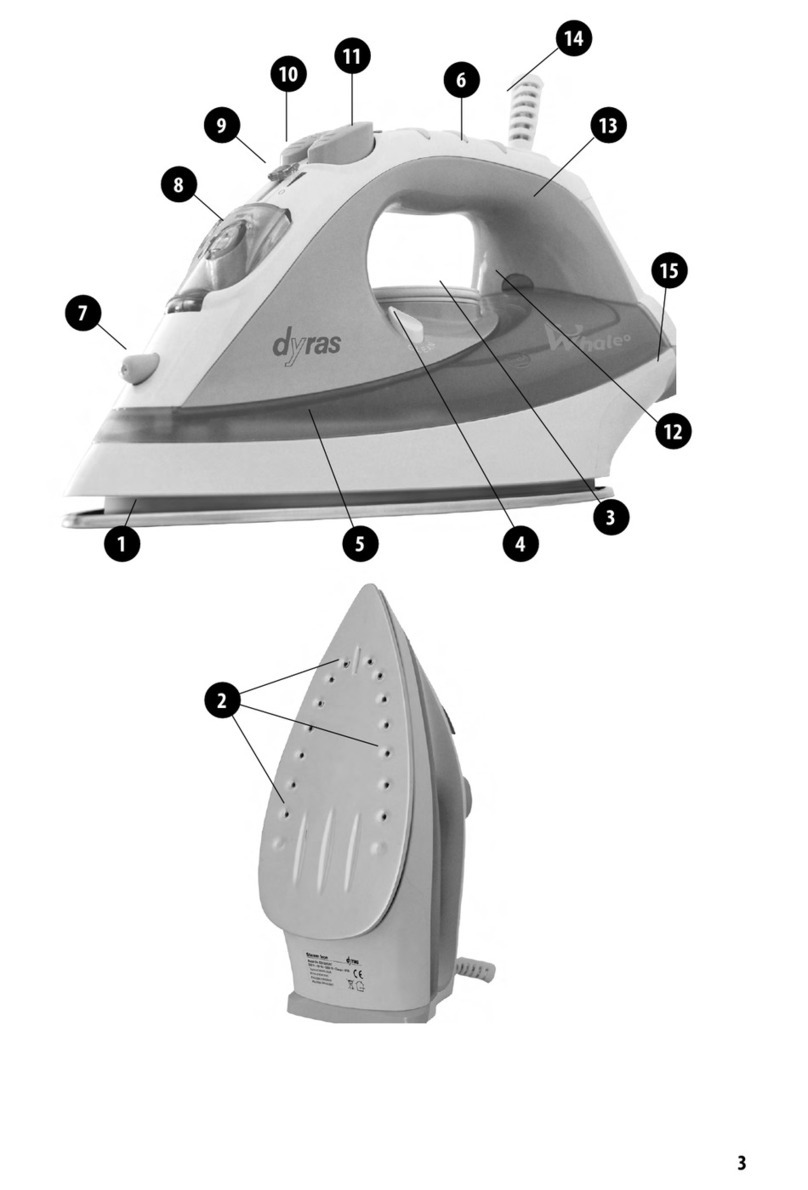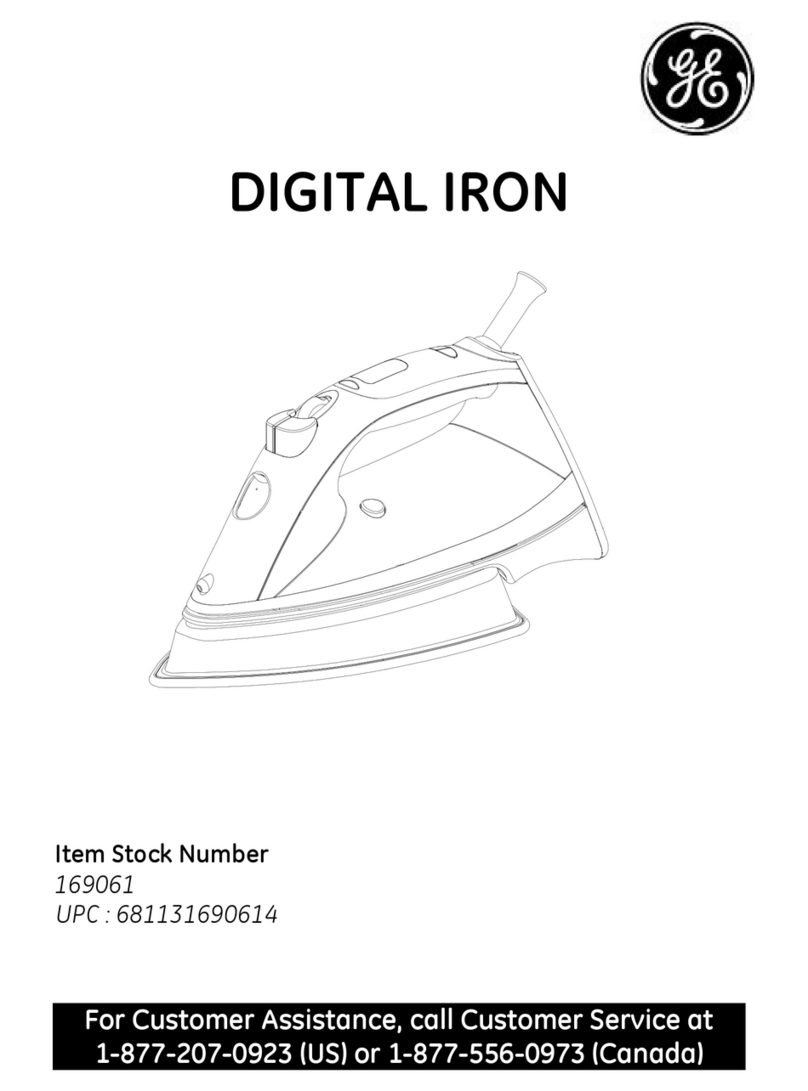
4
IMPORTANT SAFEGUARDS
When using your ironing press, basic safety precautions should be followed, including the following :
– Read all instructions before using the ironing press.
– Use ironing press only for its intended use.
–Before plugging in your ironing press, be sure the electrical information on the label on the bottom of the base agrees
with your power supply.
– Always use a mains supply which has an earth connection, for your own safety.
– The ironing press should always be turned off before plugging or unplugging from socket.
– Never yank the lead to disconnect from socket ; instead, grasp the plug and pull to disconnect.
–Do not allow power lead to touch hot surfaces. Let the ironing press cool completely before putting it away.
– Do not operate ironing press with a damaged power lead or if the ironing press leaks or is damaged. To avoid the risk of
an electrical shock, do not attempt to open and repair the ironing press ; take it to your nearest service centre for
examination or eventual repair. Incorrect re-assembly can cause a risk of electric shock when the ironing press is used.
– Close supervision is necessary when using your press with children around.
– This appliance is not intended for use by persons (including children) with reduced physical, sensory or mental
capabilities, or lack of experience and knowledge, unless they have been given supervision or instruction concerning
use of the appliance by a person responsible for their safety.
– To avoid a circuit overload, do not operate another high wattage appliance on the same circuit.
– If an extension lead is absolutely necessary, a 10-ampere cord should be used.
Power leads rated for less amperage may overheat. Care should be taken to arrange the lead so that it cannot be
pulled or tripped over.
– Never immerse the machine in water or other liquids.
– Only use cold water.
– Do not place your hands between the ironing/steaming surface and the heating plate whilst pressing.
– For any repair, take your machine to a registered after-sales service centre, to ensure that the repair complies with the
standards indicated in this instruction book.
– Any repair done by an unauthorized person would cancel the warranty.
The appliance you have just bought conforms to the low voltage European directive 73/23/CEE relating to safety and the
CEM directive 89/336/CEE relating to electromagnetic compatibility, amended by 93/68/CEE.
The manufacturer reserves the right to make changes and alterations to the product without prior notice.
GUARANTEE CARD
Thank your for choosing this product from DOMENA. It is built to the highest standards and we hope it will give you many years of trouble-free service.
One-Year Product Guarantee
Your DOMENA appliance will be repaired free of charge for one year from the date of purchase if it fails to work properly because of the materials or
workmanship we have used, subject to the following conditions:
Delivery to and from our authorised service agents will be at your risk and cost. The guarantee does not cover damage caused by abormal or professional
useage or by not complying with the instructions for use provided with the product.
The guarantee does not cover appliances that have been altered or serviced by non-DOMENA-approved agents.
After-Sales Service
For the address of your nearest Authorised Service Agenty simply contact our Customer Services in England, Telephone 01825-768899
This warranty is given in addition to and does not affect your statutory rights.
For countries outside the United Kingdom, please contact the Consumer Relation Desk in your country.
DOMENA Ltd.
Unit 20, Ridgewood Industrial Estate
Uckfield
EAST SUSSEX TN22 5QE
Tel: +44 (0)1825 749498
Fax: +44 (0)1825 749499
